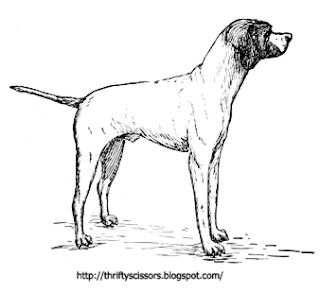 |
| Illustrated portrait of President John Adams. |
John Adams (1735-1826), was the second President of the United States, and the most famous member of a family of distinguished statesmen. He was born at Quincy, Mass., and educated at Harvard College. After completing a course in law he was admitted to the bar (1758). Adams' attention was directed to politics by the question as to the right of the English Parliament to tax the colonies, and in 1765 he published some essays strongly opposed to the claims of the mother country. As a member of the Continental Congress he was strenuous in his opposition to the home government, and in organizing the various departments of the colonial government. On May 13th, 1776, he seconded the motion for a declaration of independence proposed by Lee of Virginia, and was appointed a member of the committee to draw it up. The declaration was actually drawn up by Jefferson, but it was Adams who carried it through Congress.
In 1778 he went to France on a special mission, and after a brief home visit returned to Europe. For nine years he resided abroad as representative of his country in France, Holland and England. After taking part in the peace negotiations be was appointed, in 1785, the first ambassador of the United States to the court of Saint James.
He was recalled in 1788, and in the same year was elected Vice-President of the republic, under Washington. In 1792 he was reelected Vice-President, and at the following election was chosen President. Though a member of the Federalist party, which favored a strong central government, Adams was frequently at variance with Hamilton, the real leader of that party, and his administration was stormy. He had to face not only dissensions in his own party, but the bitter hostility of Jefferson and his adherents. The Jeffersonians were in warm sympathy with the French Revolutionists, while the Federalists favored England. Adams, determined to keep the country at peace, and above all from extending aid to France, sent three commissioners in 1797 to treat with the French government, as the relations between the two nations were somewhat strained. The insulting proposal of Talleyrand, the French foreign minister, that the United States pay France tribute money, aroused bitter indignation in America, and quick preparations were made for war. A brief naval war did actually take place, in which the French frigate La Vengeance was sunk by the Constellation. The prospect of America allied with England soon brought France to terms, and the difficulties were peacefully adjusted.
Adams, however, dug his political grave by his advocacy of the Alien and Sedition Laws, which were directed at the opponents of the administration. These laws were denounced as violations of the right of free speech and the freedom of the press, and their passage caused the downfall of the Federalist party. Adams failed of reelection, but before he retired from office he made one of the most important appointments in American history - that of John Marshall to the chief justiceship of the Supreme Court. Other events of his administration were the death of Washington and the formal removal of the government offices to Washington (1800), then set in the midst of a forest and exceedingly rough and unattractive in its primitiveness.
At the close of his term of office Adams retired to private life, disappointed and embittered at his failure to secure reelection. However, the subsequent election of his son, John Quincy Adams, to the Presidency was a consoling incident of his last days. He died on July 4, 1826, the fiftieth anniversary
of the Declaration of Independence, only a few hours after Thomas Jefferson passed away. The death of two such illustrious men on the same day has no parallel in the political history of America or of any other country. Adams' last words were, "Thomas Jefferson still survives." He did not know of the sad event in Virginia.
 |
| Administration of John Adams, 1797-1801 Outline and Questions. |












